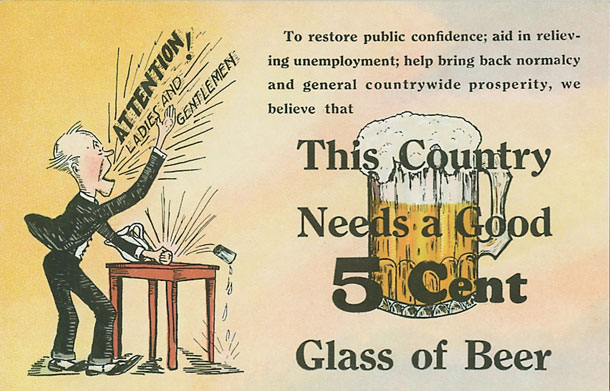Sometimes you come across a random story that has a bit of what you know to be a true, but also surprising facts introduced into evidence that have never appeared any place else. So before presenting this article that appeared in the St. Louis Republic in January of 1909, three simple questions that came immediately to mind:
– Where did the Choctaw get malted barley and hops?
– Could the “native” renowned for his brewing skill be a immigrant miner? (Because by all accounts the miners, or more accurately their wives, were the ones making Choc at the outset of the twentieth century.)
– What’s the source for this bit? “In earliest days of the serving of Choctaw beer was an act of hospitality, few Indian homes in rural districts being without supply.” Is the writer aware that the Choctaw did not arrive in what is now Oklahoma until 1832?
Guthrie OK, Jan 9 – State-wide prohibition in Oklahoma has given impetus to a native industry of Indian origin that flourished in many localities of the original Indian Territory long before the Civil War. It is the making of Choctaw beer, which got its name from the Choctaw Indians, in whose county the liquor is supposed to first have been brewed.
There are hospitable natives who will tell the stranger the Choctaw beer is as harmless as milk or spring water, and that there is nothing in it that “biteth like a serpent and stingeth like an adder.” There is gross deception in this assurance. There may have been men in the ancient days of the Choctaws whose heads were strong enough to resist the effects of Choctaw beer, but they cannot be found in these later days.
A native of Choctaw territory renowned for his skill in making of this native “beverage,” gives this recipe for its preparation: For a brew of sixteen gallons take one peck of barley malt, two quarter-pound cakes of hops, 50 cents of granulated sugar and one small cake of yeast.
On an open fire place the water in a big kettle and in it boil the malt and hops until their strength has been taken. When the liquid is milk-warm put in the sugar and yeast. Let the brew stand all night. The next morning it should be covered with four inches of foam.
The liquid should now be put into a strong keg and the bung hole left open for twelve hours, and then corked. The keg should be strong and the cork securely fastened. In four days the beer is ready for use. In winter keep the beer in a warm place and in summer in a cool place. Should it become stale, new life can be given by adding more sugar.
The native drinker is confident that Choctaw beer is ruined by putting ice in it. Bottled Choctaw beer a year old is described by Choctaw tipplers as being indescribably delightful.
For more than half a century the Federal Government enforced a prohibition in Indian Territory, this being a treaty provision with the government of the Five Civilized Tribes. The native citizen did not wish to run the risk of undertaking the more laborious work of making moonshine wiskey and turned his attention to Choctaw beer.
The strength of the beer can be made greater by increasing the amount of malt, hops, etc., the rule being that twice the amount of these ingredients would give twice the strength. One insurmountable drawback to copious libation of Choctaw beer is the fact that the “morning after” is a time of unutterable woe.
In earliest days of the serving of Choctaw beer was an act of hospitality, few Indian homes in rural districts being without supply. Many housewives were known for their superior skill in making it. Choctaw beer was served free to known guests at country hotels.
The unadulterated beer is a pleasing beverage when its strength is mild. In other forms it has been the cause of much lawlessness. When sold for commercial purposes, which has always been a violation of the law, cocaine and other injurious drugs were added to it.
The Indian is a harmless citizen when sober, but when drunk he “sees red.” Crazed with drugged Choctaw beer, Indians have run amuck with pistols and Winchesters in the towns of old Indian territory. In the mining region many of the miners are Hungarian, Poles, Irish, Italians and Mexicans. They like Choctaw beer and often drink it to excess. If the beer is of the drugged kind fights soon start.
Perhaps this story was written under the influence of Choctaw beer.
 Host Mark Ciocco has announced the theme for The Session #105 will be
Host Mark Ciocco has announced the theme for The Session #105 will be 